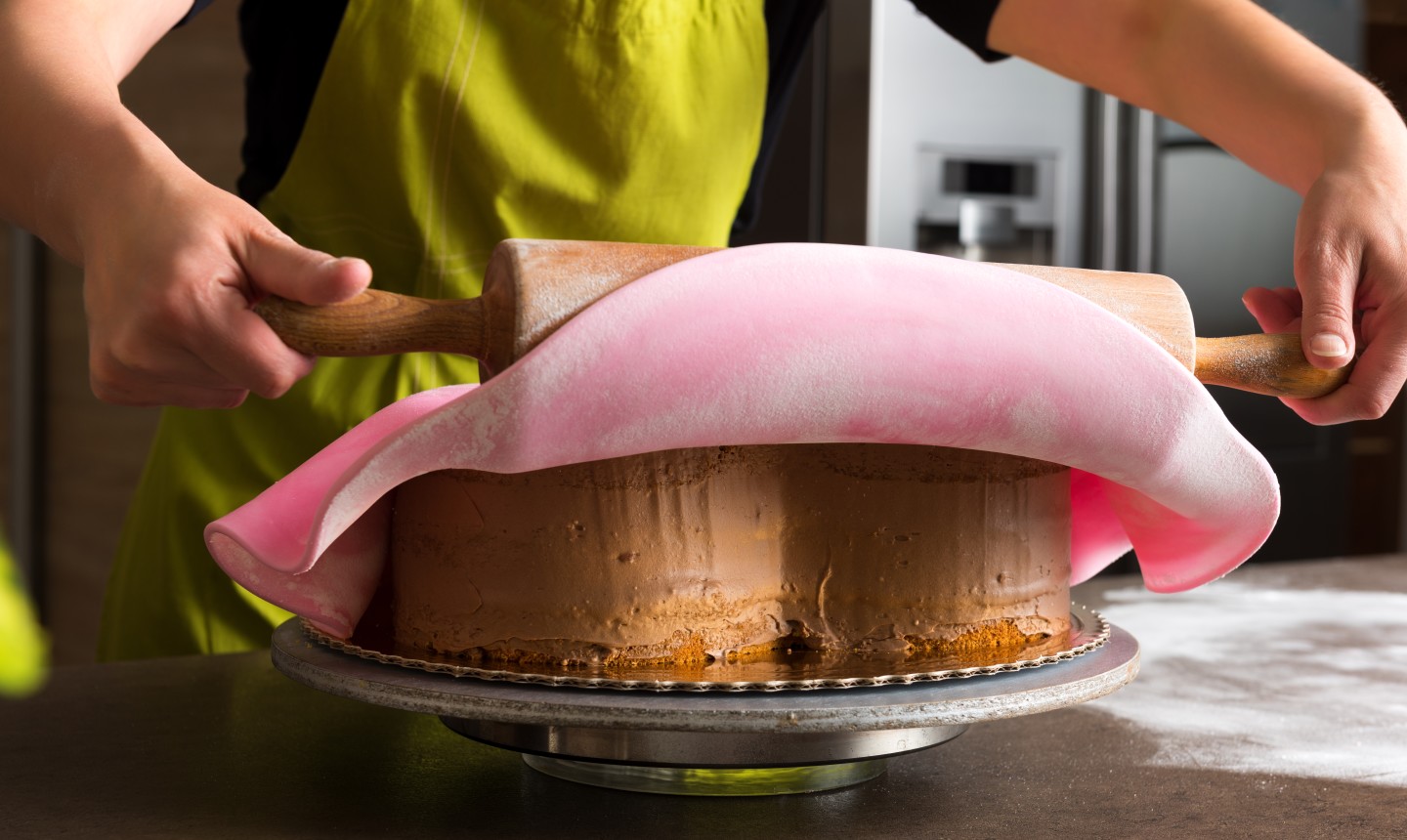More than any other question, people ask me about refrigerating their fondant-covered cakes. I, like many people, was taught that you can’t refrigerate fondant. And so, for many years, I didn’t refrigerate my cakes, until the unfortunate Malibu incident of 2009 (read about it in #2, here). I’ve refrigerated all my cakes ever since that very sad learning experience.
To be honest, I’m not really sure how the whole anti-refrigeration thing came about. True, some refrigerators, like the walk-in fridge we have at the shop, are VERY moist. If left in my walk-in fridge unprotected overnight, a fondant-covered cake will absorb so much moisture the fondant turns to liquid and literally appear to melt, like the cake in the photo below. Notice the pooled fondant around the base of the cake. We had quite a lot of fun drawing pictures in the (now liquid) fondant with our fingers. Don’t worry: The cake was just for the purposes of this blog post. We threw it out immediately.
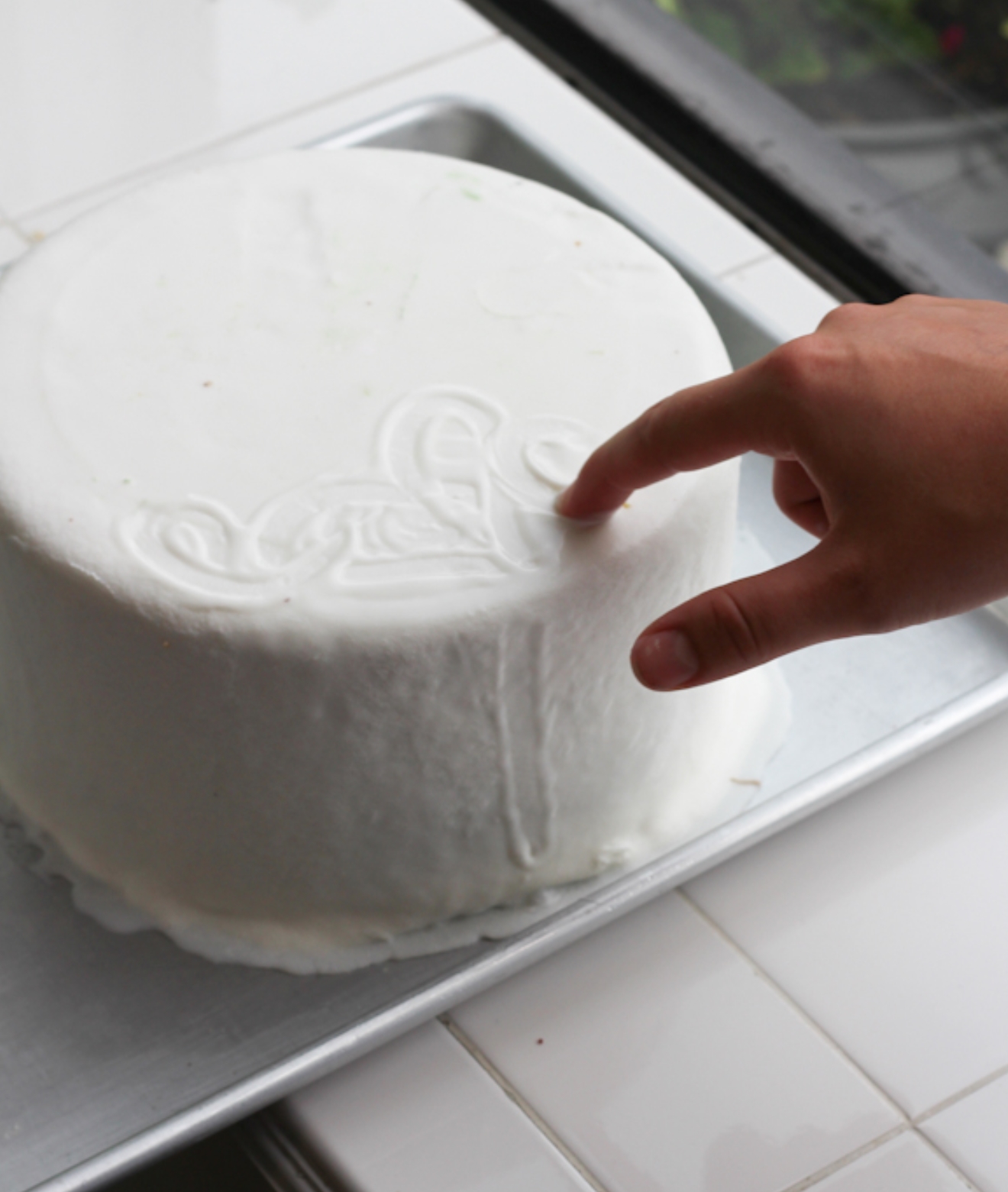
The way to combat a moist fridge is to box your cake in a corrugated cardboard box and then refrigerate. The cardboard will absorb any moisture in your fridge and protect your cake. Don’t use flimsy cake boxes. They do not provide enough of a barrier or a thick enough layer to absorb moisture. I’m talking about good, ol’ fashioned, kraft-brown cardboard. Just got a new cake stand delivered to you? The shipping box that it came in is probably perfect. Bought a new blender on Amazon? The box it was shipped in is most likely ideal for cakes. (Warning: You will develop box envy using this method. Yes, you will be driving down the street and see an abandoned box on the corner. You will think to yourself “Ooooh. That’s a good box!” You will be tempted to stop and take this box home. You will soon have a basement full of boxes.) You’ll want to make sure your box is taped shut to keep out as much air as possible.
Tip: Place your box vertically on the table so the opening flaps act like doors and slide your cake in. You do not want to have to reach in from the top of the box to place your cake.
You might be lucky and have a very dry fridge and not even need to box your cake at all. (Want to know if your fridge is moist or dry? Conduct an experiment. Place a fondant covered cake in the fridge overnight. If you come back to a big soupy mess, you have a moist fridge. Note that this will not work with a faux cake since styrofoam dummies contains significantly less moisture than real cakes. You must use a real cake.)
So let’s settle this once and for all: Fondant-covered cakes can be refrigerated, provided they are protected from the moisture in the fridge.
Here are several other fondant cakes, all real (not dummies) that sat in the fridge in boxes overnight.
White fondant with blue to green gradient fondant pinwheels.
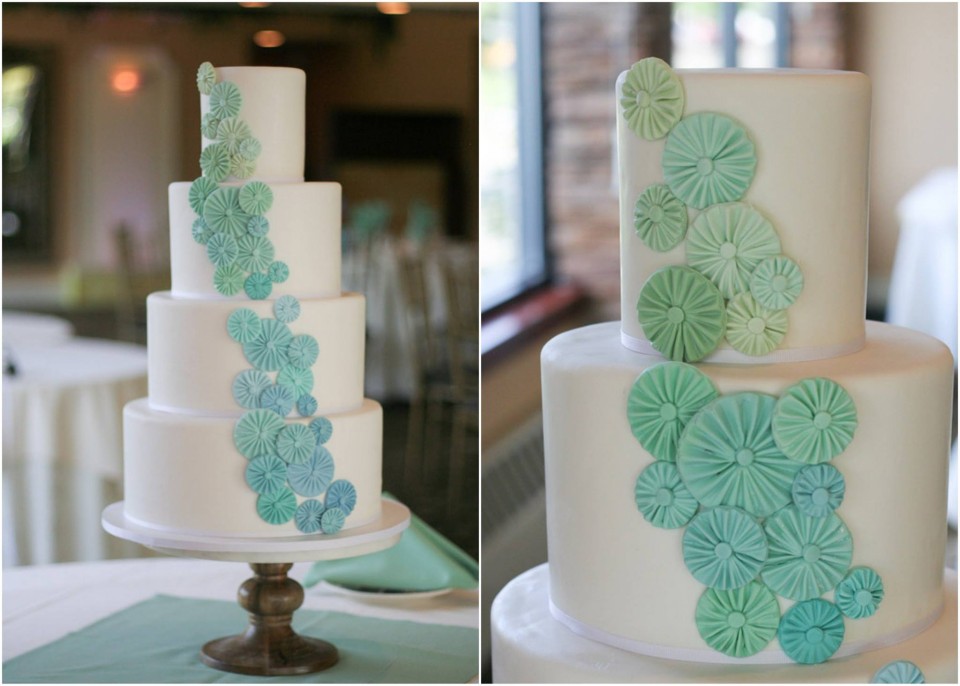
Pink with hand-piped and painted silver dots.
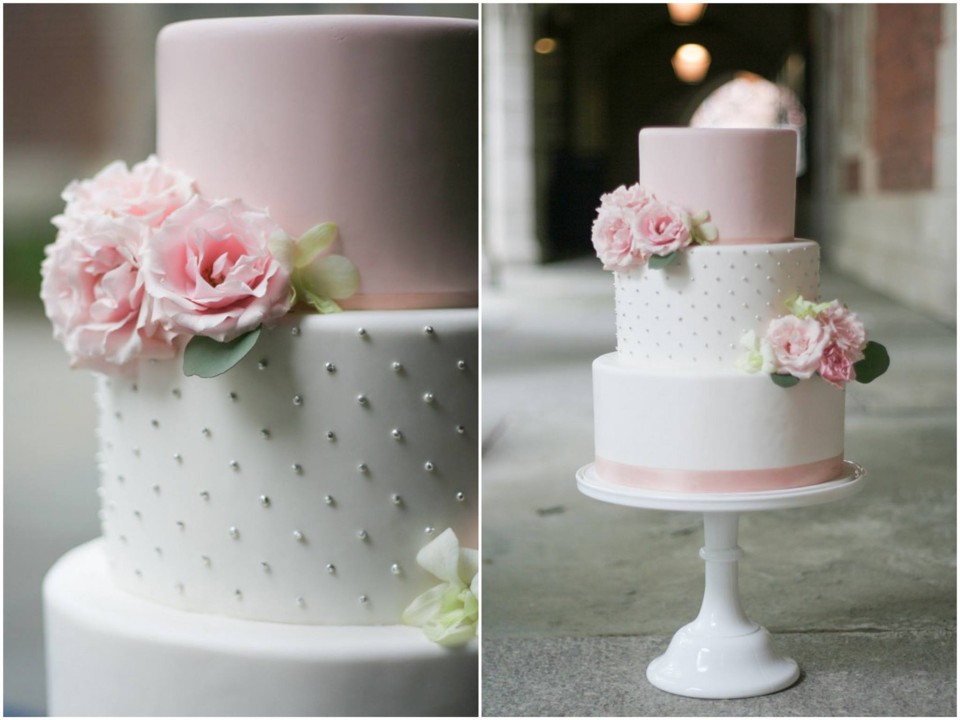
Fondant pleat, sugar flowers, and edible lace appliques.
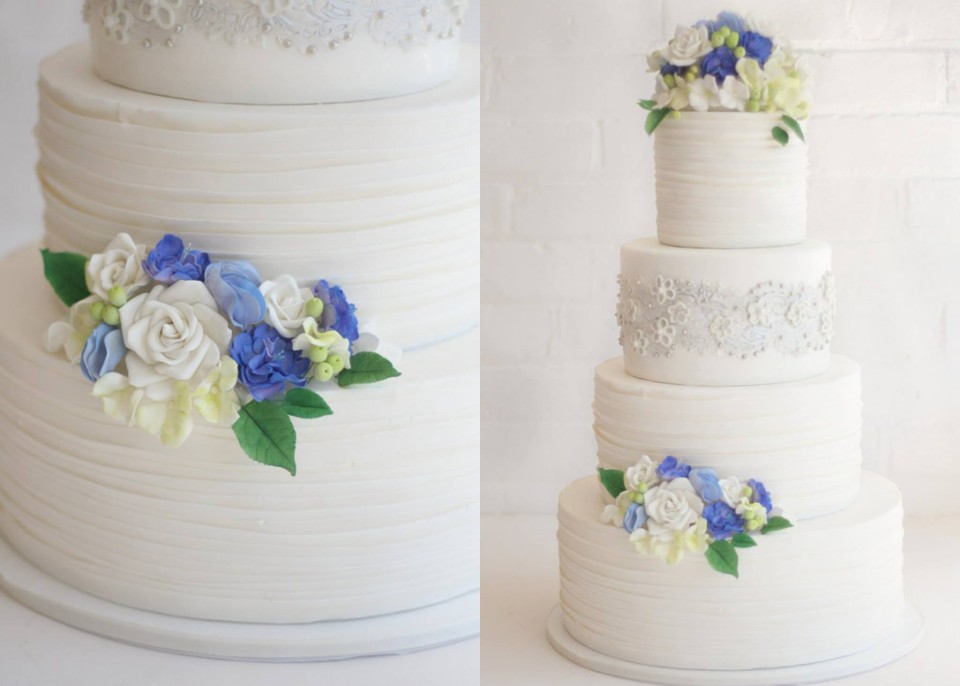
Printed wafer paper, sugar flowers.
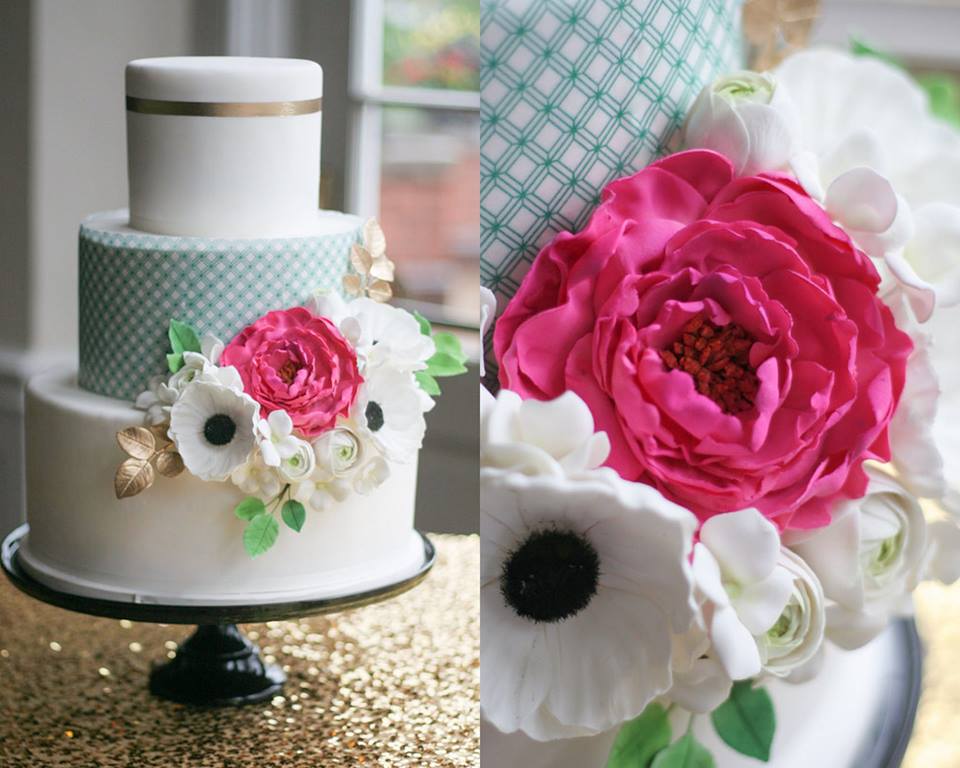
If you’ve been doing cakes successfully for years without refrigerating them, great! I’m not telling you to change your process. I’m telling you what works for me.
So when should you refrigerate? This depends on a few factors:
1. The weather: Warm weather will soften cake and filling. Butter is particularly sensitive to heat, so butter-based cakes and buttercreams become soft in warm room temperatures.
2. The filling and icing: Chocolate ganache, especially when made with a high ratio of chocolate to cream, stays pretty firm, even at room temp. If you’re using chocolate ganache in your cake layers and as a coating under your fondant, refrigeration might not be necessary. On the other hand, some fillings must be refrigerated for food safety reasons.
3. What you’re doing with the cake: Are you going to be eating it tomorrow or in a few hours? If you plan to eat the cake soon, you probably don’t need to refrigerate (unless it is exceedingly warm).
4. Where you’re going with the cake: Is your kitchen counter the cake’s final destination? If so, it won’t be moving or bouncing, so you don’t have to worry about the contents getting giggled. On the other hand, are you taking the cake on a two-hour delivery? You’ll want to refrigerate to ensure everything in the cake stays as firm as possible to avoid disaster. Be sure to allow your cake enough time to come to room temp before being eaten.
Even with the boxing method, if the air temperature is very warm, you may see some condensation form on the cake once you take it out of the fridge. (I only have this problem during the summer, never during the winter.) The condensation will eventually evaporate and your cake will be fine. Don’t touch it while there is condensation on it as the fondant is very, very sticky at this point. If you’d like to minimize condensation, you will need to minimize the difference between fridge and air temp. Raise the temp in your fridge (so it is still cool enough for food safety but warmer than normal) and lower the air temp by blasting the A/C.
Best of luck with all your cakes, refrigerated or not.
Enjoy!
Comment on “Yes! You Can (and Sometimes Should) Refrigerate Your Fondant-Covered Cakes!”
Valarie
Hi Erica, Thank you so much for your brilliant tips. I tried this method on the weekend and the cake was fine until a few hours later when the frosting underneath had reached room temp. I will agree the need to minimize the difference between fridge and air temp.
Marlene
Thanks for the information, but would like to know if to put my cake in the fridge
Erica OBrien
I recommend that you read this post: https://ericaobrien.com/blog/yes-you-can-and-sometimes-should-refrigerate-your-fondant-covered-cakes/
Lea Cesar
I ALWAYS refrigerate my cakes. Here in Denmark, we use mousse in the cakes as a filling, so refrigerating is really a must. Thanks for the tips Erica! <3
ndalammbi
Thank you so much..I was also told u don’t put fondant cakes in the fridge because it sweats and messes up with the deco on the cake and I live in a very very hot area and gets to 43 degrees. This was very helpful
rosa
Thank you very much!!! You are the best!
Bons
Thanks for the great post! I was desperately learning as much as I can on behavior of fondant as I live in high humidity area. Again good points tips!
Pam
Thank you so much…..that was really helpful
A fondant és a hűtő esete… MIT TEGYÜNK? | tortaiskola
Sandra
Hi love your work and thank u so much for your advise. Will refrigeration also work for humid weather. It is so difficult to work with fondant in Mumbai and I stress a lot. Tried adding half gum paste and tylose but does not help too much. Pls advise
Erica OBrien
Hi! Thanks so much Sandra! I am not sure what you mean by “will refrigeration also work for humid weather”. Unfortunately it is very hard to work with fondant when it is humid since it becomes quite sticky and soft and stretchy. I try to blast the air conditioning when it’s very humid. If this is not an option, I would recommend a dehumidifier. This will remove moisture from the air.

